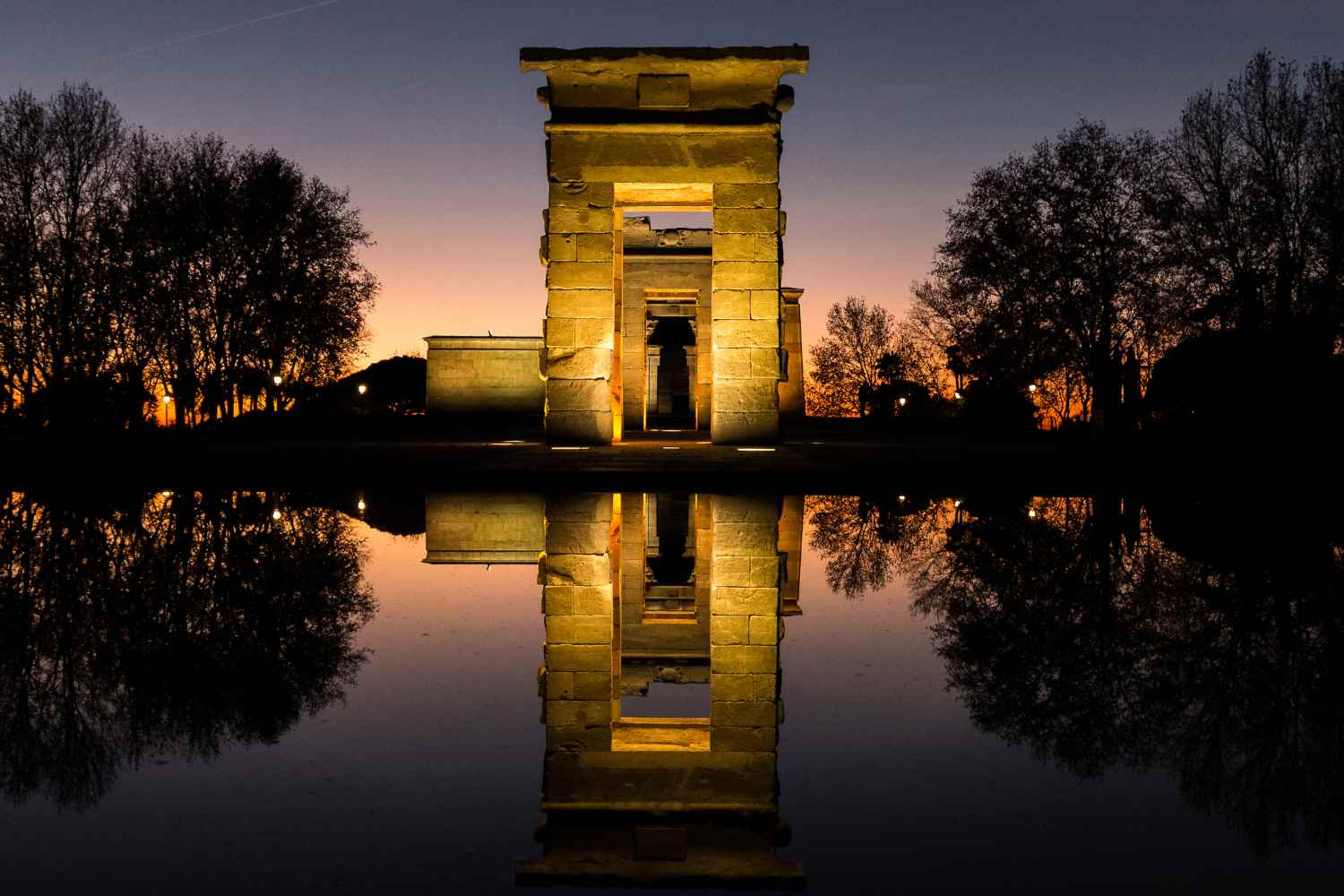Ancient Egyptian temple rescued from Aswan Dam flooding now stands in Madrid's heart, showcasing 2,000+ years of Nubian-Roman history and international cooperation

Table of contents
In the heart of the Spanish capital, amid modern boulevards and European architecture, stands an incredible testament to ancient Egypt: the Temple of Debod. This extraordinary monument represents one of the most fascinating stories of archaeological rescue and international cooperation of the 20th century, where Nubia meets Madrid in the most unexpected way.
From the banks of the Nile to Madrid
The story of the Temple of Debod begins over two thousand years ago in Lower Nubia, along the banks of the Nile. Originally dedicated to the gods Ammon and Isis, this sanctuary occupied a strategic position in a region rich with natural resources, which amplified its religious and cultural importance. Its connection to the famous sanctuary of Isis at Philae transformed it into an important pilgrimage center, where the faithful flocked to invoke fertility and divine protection.
During the Ptolemaic Dynasty, the temple experienced a period of great splendor. It was the Nubian king Adijalamani who left the most lasting mark on the structure, considerably expanding it and enriching it with hieroglyphs that still today tell of his devotion to Ammon and Isis. These interventions transformed the temple into a symbol of power and identity for the entire Nubian region.
The meeting of worlds: the Roman era
With the advent of Roman rule, the Temple of Debod experienced a new phase of transformation. Emperors like Augustus, Tiberius, and Hadrian contributed to its evolution, introducing architectural and decorative elements typically Roman that merged harmoniously with the pre-existing Egyptian iconography. This cultural synthesis created a unique artistic work, where reliefs and sculptures told the story of dialogue between two great civilizations.
The temple thus became a symbol not only spiritual but also political, representing the religious syncretism that characterized the Roman Empire. However, with the rise of Christianity in the 6th century, the sanctuary’s destiny changed radically.
Abandoned to its fate, the temple began a slow process of deterioration, victim to time, climate, and human neglect. It’s remarkable how monuments can survive millennia only to face their greatest threats in modern times.
The dramatic rescue
The 20th century brought a new threat to the Temple of Debod. The construction of the Great Aswan Dam in 1970 threatened to submerge forever numerous archaeological treasures of the Nile valley, including this precious monument. Faced with this unprecedented heritage crisis, UNESCO launched the Nubia Campaign, an extraordinary international initiative that mobilized experts from around the world to save these monuments from oblivion.
Spain was among the countries that actively participated in this rescue operation. As recognition for the contribution offered, in 1968 Egypt made an extraordinary gift to the Iberian nation: the entire Temple of Debod. Thus began one of the most complex archaeological transfer operations in modern history.
The temple’s rebirth
The transfer of the temple from Aswan to Madrid represented an unprecedented technical and logistical challenge. Every single stone block was numbered and catalogued, for a total of 1,724 elements that had to be dismantled, transported by sea, and reassembled in their new destination. Yet only 60% of the original material arrived in sufficiently good condition to be reused—a sobering reminder of how fragile our cultural heritage truly is.
Spanish architects and restorers faced this challenge with great ingenuity, using the technique of anastylosis, which involved integrating the original blocks with new sandstone from Villamayor. This choice wasn’t random: the local stone allowed them to maintain the overall aesthetics of the monument while clearly distinguishing the restored parts from the original ones, in full respect of archaeological conservation principles.
Mysteries and legends
Despite its urban location, the Temple of Debod hasn’t lost its mysterious charm. One of the most evocative legends tells that at sunset, when shadows lengthen over the millennial stone blocks, the silhouette of a cat appears. According to popular tradition, this would be the spirit of King Adijalamani, who continues to watch over his temple even thousands of miles from his native land.
This legend reflects the deep spiritual connection that ancient Egyptians had toward felines, considered sacred animals and divine messengers. The presence of this spectral cat symbolizes the continuity between past and present, between ancient Egypt and contemporary Madrid.
The sacred orientation
An aspect that strikes the most attentive visitors is the temple’s orientation, perfectly aligned from east to west. This arrangement isn’t casual, but reflects the profound Egyptian cosmovision, where the sun’s path represented the eternal cycle of life, death, and rebirth. Even in its new Madrid location, the temple maintains this symbolic connection with the solar star, continuing to tell the story of a civilization that saw in the sun the manifestation of divinity.
A bridge between cultures
Today, the Temple of Debod is open free to the public from Tuesday to Sunday, from 10:00 AM to 8:00 PM, without need for reservation. Inside, visitors can explore exhibitions dedicated to Egyptian mythology, discovering the mysteries of Ammon and Isis and the rituals that for centuries animated this sacred place.
The Temple of Debod thus continues its millennial mission, no longer as a place of worship, but as a silent witness to humanity’s capacity to preserve and pass down beauty, transforming a corner of Madrid into a window onto the eternity of ancient Egypt.
